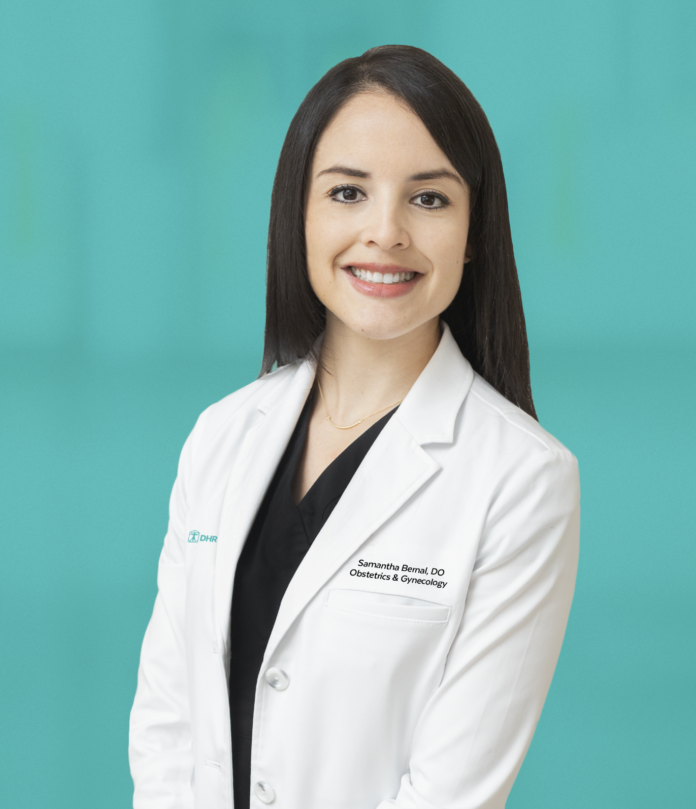
By: Dr. Samantha Bernal
DHR Health Women’s Hospital
Breast cancer leads the race as the most diagnosed cancer among women in the United States. The month of October gives a renewed opportunity to increase awareness and education on breast cancer.
According to the American College of Obstetrics and Gynecology (ACOG), a woman’s lifetime risk of developing breast cancer is 1 in 8 and is the second leading cause of cancer deaths in women in the United States. Due to improved surveillance and treatment options, mortality rates from breast cancer have decreased tremendously, with improved 5-year survival rates of 90%.
There are certain factors that may increase a woman’s risk of developing breast cancer. The main factors include being female and increasing age. Uncontrollable risk factors, or things we cannot change, include personal and family history, ethnicity, early age of menses and late menopause, and having genes such as BRCA1 and BRCA2. Modifiable risk factors, or things we can change, include increasing weight, smoking, alcohol consumption, having children, and use of hormone replacement therapy.
Lifestyle changes to decrease the risk of breast cancer include maintaining a normal weight. This can be accomplished by eating a healthy, balanced diet and exercising regularly. As per the Centers for Disease Control and Prevention (CDC), 150-minutes of moderate-intensity aerobic physical activity is recommended per week. Also, avoiding smoking and heavy alcohol consumption may help.
Several screening guidelines have been developed to improve early detection, decrease advanced disease, and improve survival. Guidelines have been created by ACOG, the American Cancer Society (ACS), the U.S. Preventive Services Task Force (USPSTF), and the National Comprehensive Cancer Network (NCCN) which all give recommendations on clinical breast exams, age of initiating screening mammograms, interval of screening, and age to stop screening.
Key points include that regular self-breast exams are no longer part of routine recommendations due to increase anxiety and worry. However, it is important to practice self-breast awareness and know one’s own breast appearance to identify when there is a change. As per ACOG, it is recommended to have clinical breast exams starting at age 25, screening mammograms starting at age 40, in one-to-two-year intervals, and possible discontinuation of screening at age 75. Other guidelines offer similar screening recommendations at different initiation times and intervals.
It is important to talk to your healthcare provider to discuss the risks and benefits of breast cancer screening and have a shared decision on which guideline is best for you.
If you or a loved one would like more information about mammograms or to schedule an appointment for our $99 mammogram special, please call DHR Health Women’s Imaging Center at (956) 362-7503.




